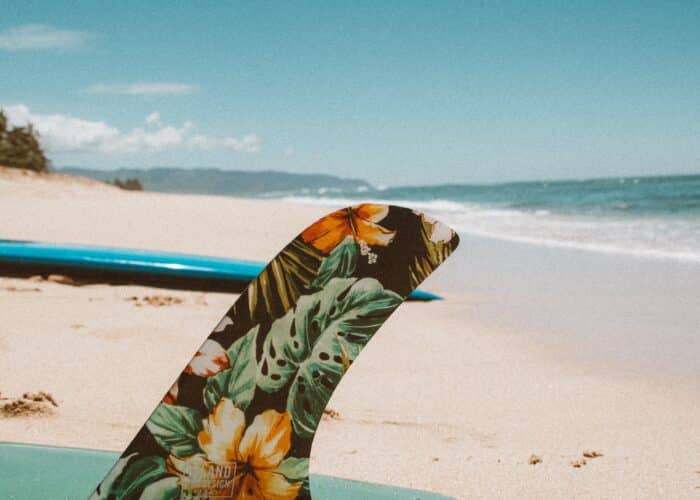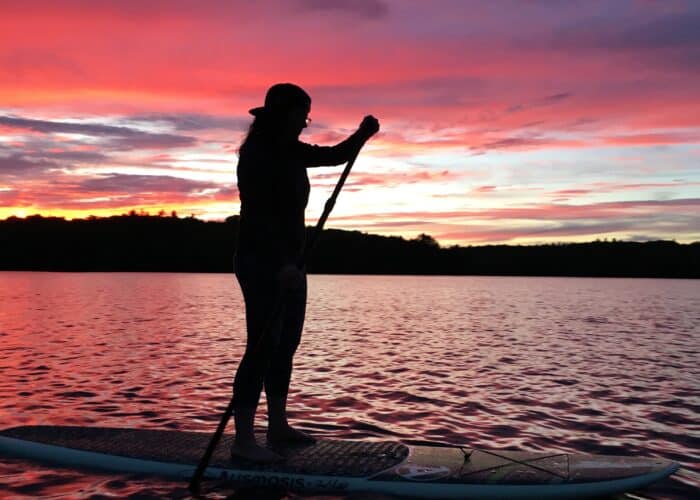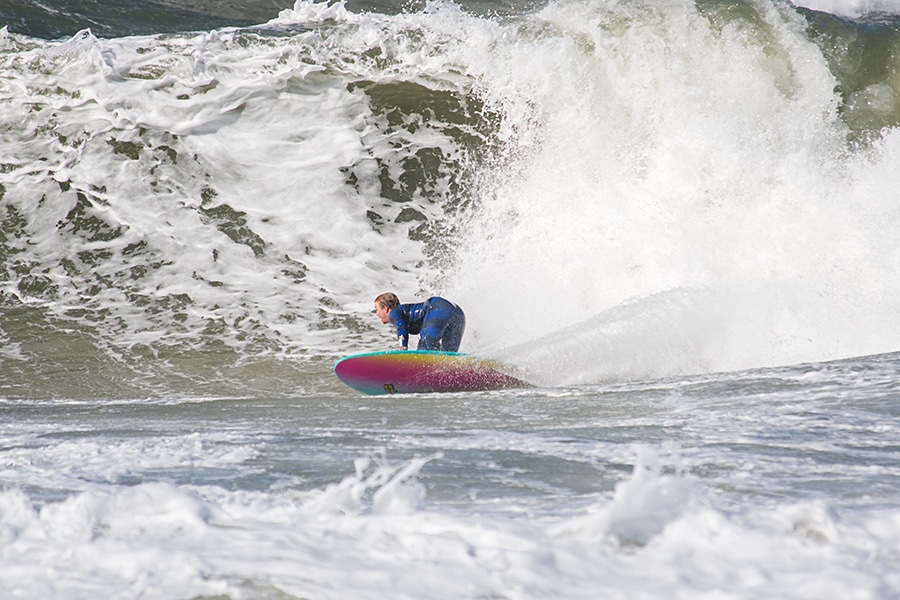
Turning is vital to progressing as a surfer. If you’re an intermediate surfer looking to improve your on-wave performance, mastering the bottom turn to top turn combo will help you take your surfing to the next level. In surfing, most maneuvers are designed to get the surfer back in the pocket where the wave has the most speed. In a recent surf tips article, we covered how to generate speed on a wave. We generate speed to help get through slow sections of the wave and set up maneuvers like cutbacks, snaps, or airs. If you’ve begun to master generating speed on a wave, it’s time to take the next step in surf progression and learn to effectively turn. Turning allows us to finish waves with style, get back into the pocket, and further generate speed. For JOB Surf Experience Surf Tips: Mastering Bottom Turns, continue reading below.
Surf tips: Identifying Sections and the different types of turns
The first step to turning on a surfboard is to identify the sections of the wave where a turn would be appropriate. There are a variety of ways to turn while surfing, but they can all be placed into four categories: bottom turns, top turns, snaps, and cutbacks. Each turn is performed in a different section of the wave for a different purpose. Bottom turns are performed either just after a surfer pops up or down the line to set up a top turn.
Starting the Wave with a Bottom Turn
Not every wave begins with a bottom turn. If a wave is particularly mushy and weak or breaking quickly, you may be forced to take a high line to make the next section. Mushy waves don’t provide surfers with the necessary momentum to continue down the line after a bottom turn into the flats. Fast-breaking waves may have the necessary power to allow surfers to turn out in front of the wave, but they break too quickly for a surfer to recover from a wide bottom turn. If a wave is breaking at a moderate pace and a bottom turn is appropriate, surfers have two options, large swooping bottom turns that extend into the flats, and shallow bottom turns that allow surfers to quickly set their line. Use a large, swooping bottom turn to set up a successive top turn. Use a shallow bottom turn to set your line on the upper two-thirds of the wave and make it through vertical sections of the wave.
How to Bottom Turn
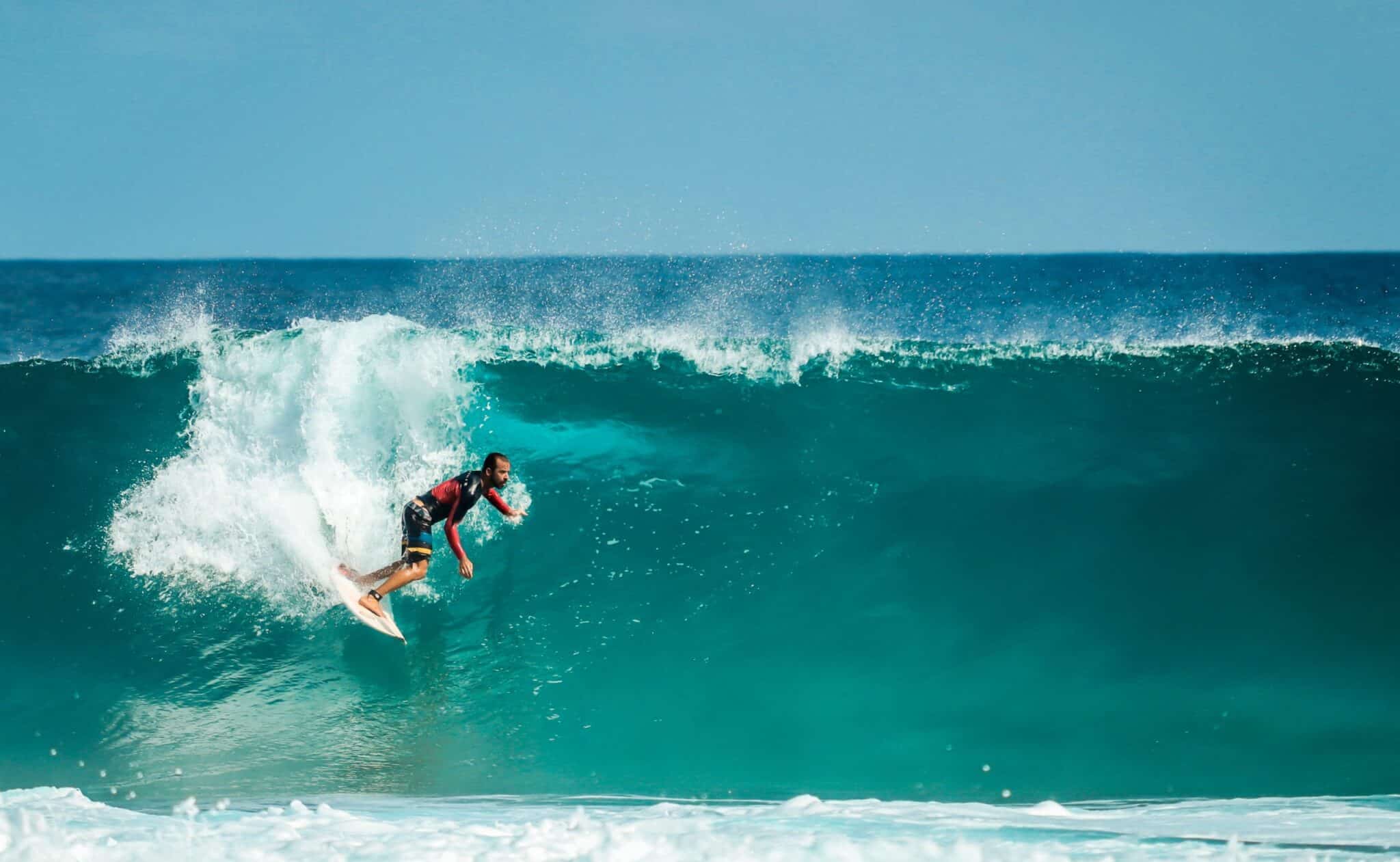
In our previous surf tips post about generating speed, we mentioned that surfers utilize their entire bodies and gravity to help them generate speed along the wave’s face. The same is true of bottom turning. To bottom turn, take off at the peak or as close to the peak as possible to give yourself the maximum momentum going into your turn. Aim your board 15° to 45° down the waves face, depending on what type of bottom turn you wish to perform. As you descend the waves face, compress your body by bending at the knees. As you reach the bottom third of the wave’s face, compress further with your back knee slightly tucked and dig your inside rail into the wave’s face. As you dig your rail, you’ll feel your rail line engage on the wave’s face and propel you back up the wave. Decompress as your rise up the wave to begin generating speed or to perform a top turn. As with generating speed, when you are bottom turning, it’s vital to look in the direction you want to go. In this case, it’s up the wave’s face.
Backside Bottom Turns
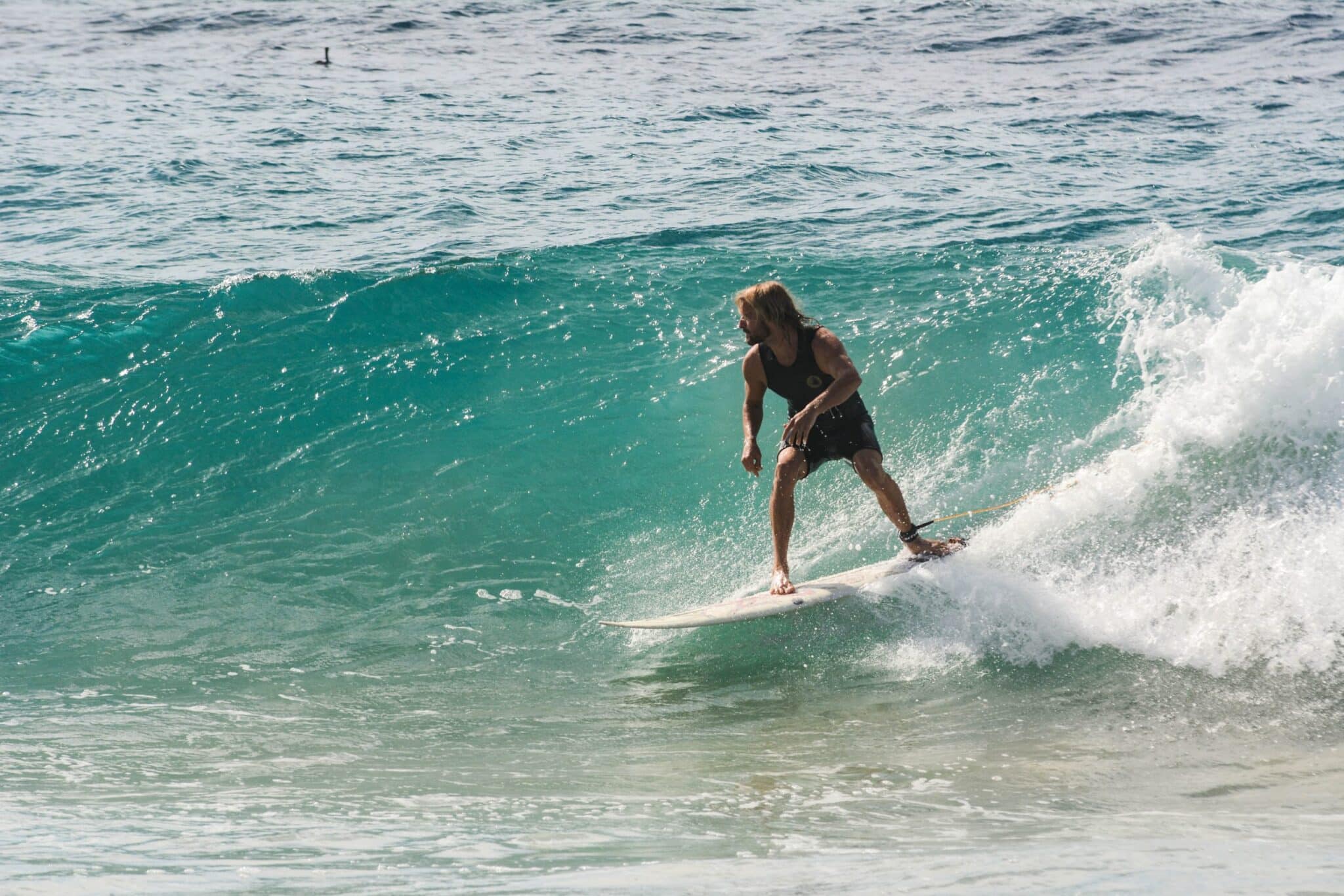
Executing a bottom turn while riding backside is like bottom turning front side. Because you’re not facing the wave, it is especially important to look over your shoulder and aim your turn up the wave’s face. As you descend, you’ll use your heels to engage your backside rail and ascend the wave. As you reach the bottom of your descent with your rail engaged, reach down with your leading arm to help rotate your body.
A bottom turn can make or break an entire ride. Stay tuned to the Jamie O’Brien Surf Experience Blog for more surf tips. Visit our website to book your North Shore Surf Lessons, North Shore Surf Guiding, Stand Up Paddle Tours, and more! If you’re planning an Oahu vacation, book your stay at the Turtle Bay Resort to stay close to all the action on the North Shore.



